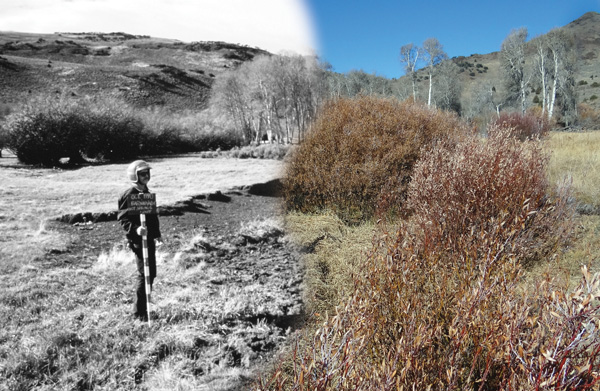
Grazing helps to shape ecosystems, but the effects depend on management and the environment. Stream bank or upland meadow? Willow or sagebrush?
Over much of the 20th century, cattle grazed in the Hart Mountain National Antelope Refuge in southeastern Oregon. In riparian areas where animals had congregated, channels were eroded and vegetation was sparse. Cattle were excluded from the refuge in 1991. Since then, scientists have documented increases in willows, aspen and other plants in those areas.
Using digital photography, Oregon State University researchers have now quantified the recovery. By comparing historical photos to modern images and categorizing land cover pixel by pixel (the minute dots that comprise an image), they calculated increases in vegetation and reductions in bare soil.
Graduate student Jonathan Batchelor worked with William Ripple, a Distinguished Professor of Forestry, to compare 64 pairs of photos taken over 23 years. Only 6 percent of what was bare soil in the early 1990s remained in that condition when new photos were taken in 2013 and 2014.
Fourfold increases in willows and rushes were among the results they reported last year in the journal Environmental Management.




